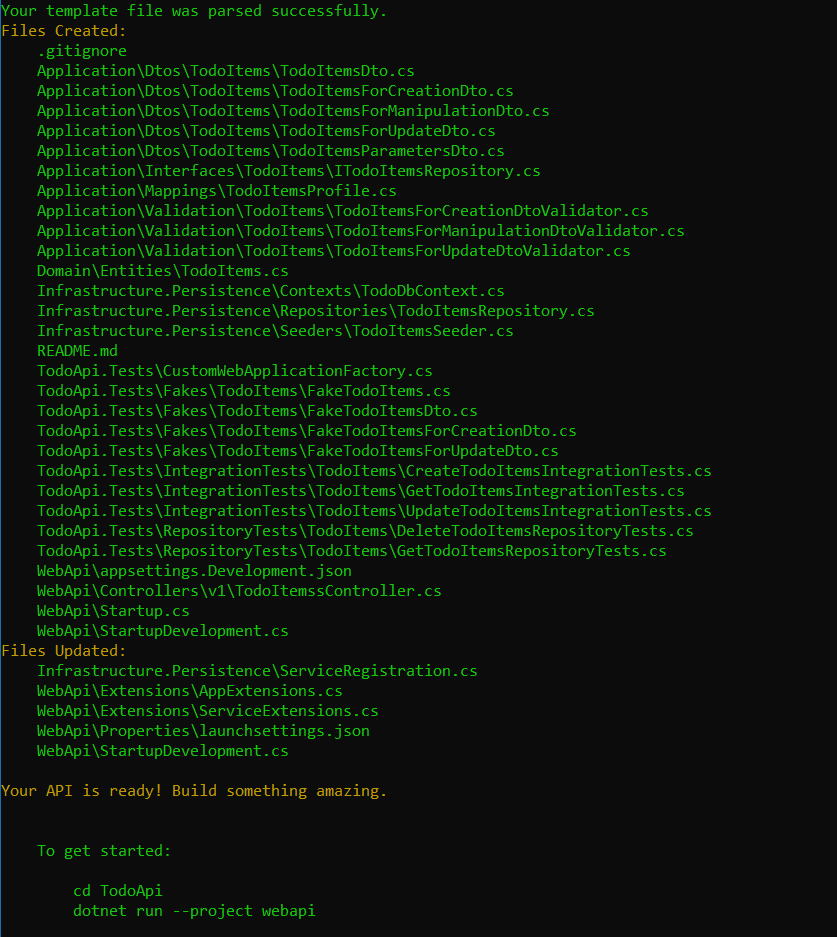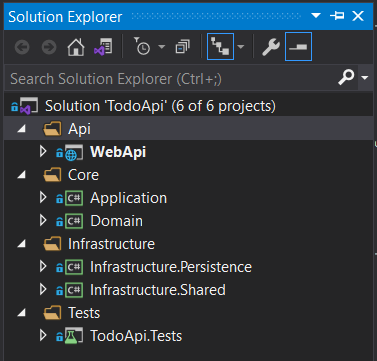Scaffold an entire .NET 5 Web API using Wrapt
January 01, 2021 by Anuraj
WebApi AspNetCore Scaffolding
This post is about scaffolding an entire .NET 5 Web API with a simple yaml or json file using Wrapt, which helps you can focus on the high value features in your web app. Recently I came across this tool which helps you to scaffold a Web API application in Clean architecture with Open API documentation, unit tests and integration tests by providing a YAML or JSON file.
To get started you need to install a project template and a dotnet tool. So first you need to run the command - dotnet new -i Foundation.Api - this command will install the Foundation API project template. Next you need to install the craftsman tool which helps you to scaffold the project. You can install it using dotnet tool install -g craftsman command. Once installation is successful, you can run the craftsman command which will display an output like this.

Next you need to create a YAML or JSON file - it is the template from which craftsman is generating the solution and projects. For this demo I am building a todo application YAML template file, which will look like this.
SolutionName: TodoApi
DbContext:
ContextName: TodoDbContext
DatabaseName: TodoDb
Provider: SqlServer
Entities:
- Name: TodoItem
Properties:
- Name: TodoId
IsPrimaryKey: true
Type: int
CanFilter: true
CanSort: true
- Name: Name
Type: string
CanFilter: true
CanSort: true
- Name: IsCompleted
Type: bool
CanFilter: true
CanSort: true
Environments:
- EnvironmentName: Startup
ConnectionString: "Data Source=.;Initial Catalog=TodoDb;Integrated Security=True;Encrypt=True;TrustServerCertificate=True;"
ProfileName: Dev
SwaggerConfig:
Title: Todo Api Service
Description: API for managing todo items.
ApiContact:
Name: Anuraj
Email: support@dotnetthoughts.net
Url: https://dotnetthoughts.netThe YAML file is simple and straight forward. Here is the detailed explanation of each element.
- SolutionName - This element used to configure the application solution name.
- DbContext - This element is about configuring Database Context associated to the application. This element got other properties like DbContext name, Database name and Provider - Currently SqlServer and PostgreSQL only supported.
- Entities - This element helps you to configure the database entities in the application. For the todo list application I am configuring only one entity. You need to provide the name of the property, type and associated meta data like sort and filter support.
- Environments - This element helps you to configure environment configuration - which helps you to configure the connection string and associated variables for a certain environment.
- SwaggerConfig - This element helps you to build the Open API documentation for the Web API.
You can copy / paste the YAML file and save it as todo-api.yaml. Next let’s build the web api. You can run the command - craftsman new:api .\todo-api.yaml, which will parse the YAML file and scaffold the solution and projects.

So we successfully scaffolded the application. Next change the directory to TodoApi and execute the command dotnet run --project webapi - the webapi folder contains the API project file. Once the application is running, browse the /swagger endpoint which will display the Open API documentation like this.

And here the folder structure created by the application.

This project is created using the Clean Architecture, because of that the files and project are structured in certain way. Long back I wrote a blog post on how to generate Angular code from OpenAPI, using those utilities we can build web api client application as well.
You can find more details about Wrapt from https://wrapt.dev/. And here is the getting started and tutorial. Explore it and let me know your thoughts.
Happy Programming :)
Found this useful? Share it with your network!
Copyright © 2026 Anuraj. Blog content licensed under the Creative Commons CC BY 2.5 | Unless otherwise stated or granted, code samples licensed under the MIT license. This is a personal blog. The opinions expressed here represent my own and not those of my employer. Powered by Jekyll. Hosted with ❤ by GitHub
